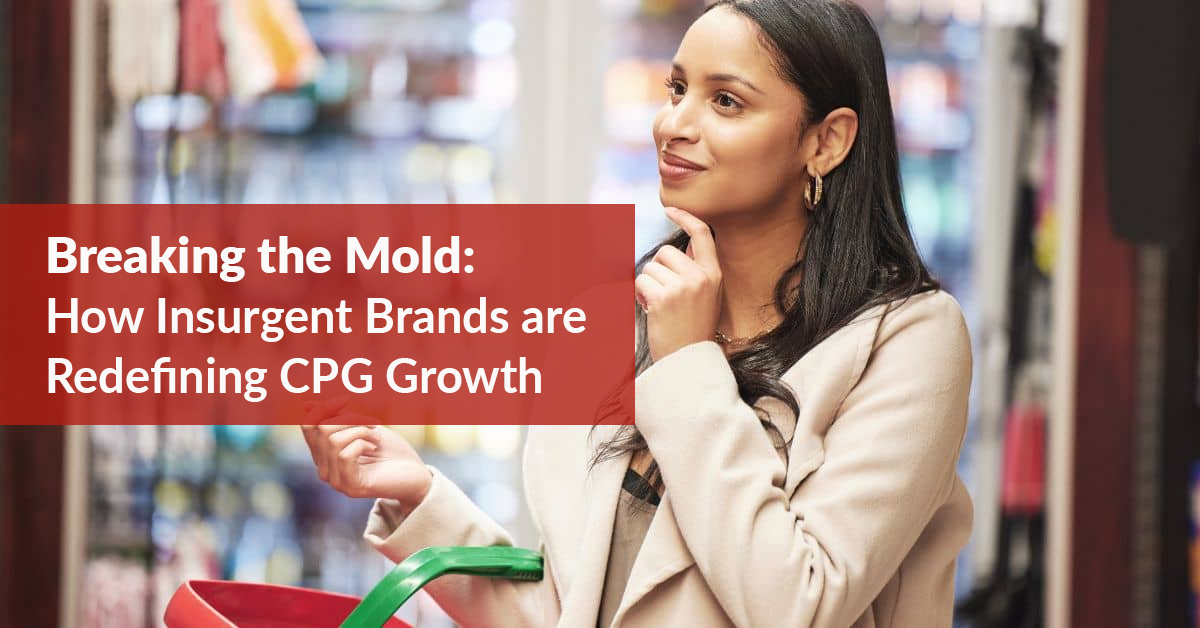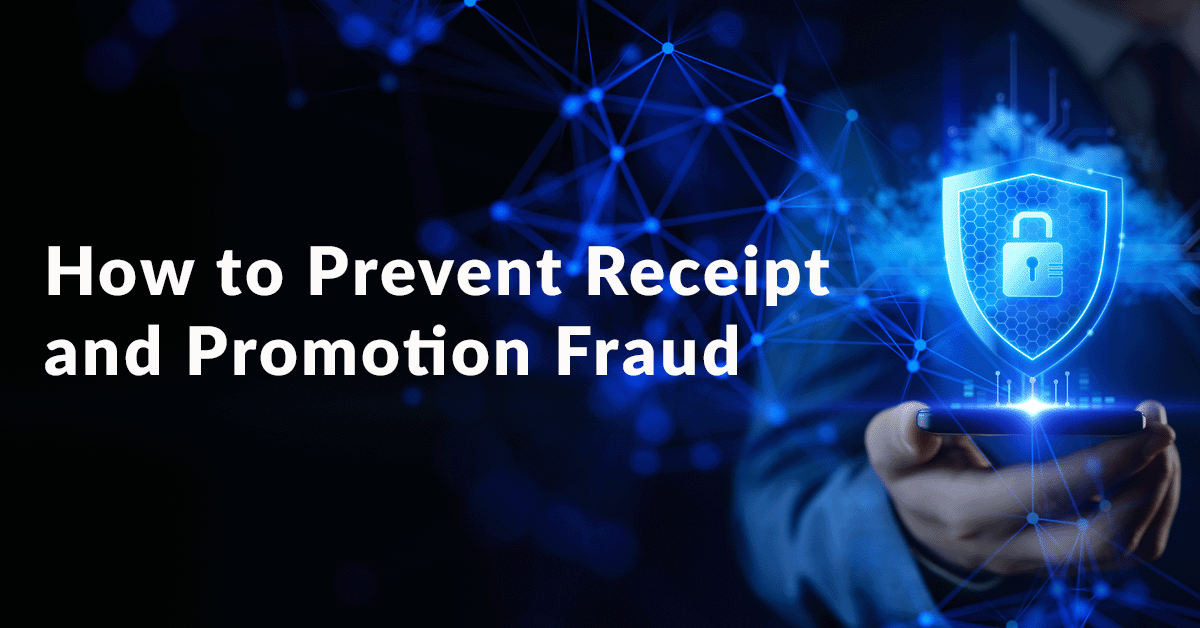The consumer packaged goods (CPG) playbook is changing. As shopping behaviors evolve and brand loyalty becomes increasingly fickle, established players must adapt quickly to keep up with their innovative and ambitious competitors.
In a recent episode of our Engagement Matters podcast, Snipp's Chris Cubba and Brendon Lemon explored how insurgent CPG brands are disrupting legacy players and redefining what growth looks like in today's market. Here are the key takeaways.
What are Insurgent Brands?
Also referred to as emerging or challenger brands, these are typically small, fast-growing companies that gradually take market share from larger incumbents. While they start small, their impact on consumer preferences and industry standards is anything but.
“How do we define 'insurgent brands'? They're typically independent from major CPG investors. They often start direct-to-consumer, grow a passionate following, and start to eat the lunch of established players.”
– Chris Cubba, Chief Revenue Officer, Snipp
The Rise of Insurgent Brands
Recent headlines reveal the disruptive influence insurgent brands have had on the CPG market. Pepsi's acquisition of Poppi, a prebiotic soda brand, for almost $2 billion demonstrates the value major corporations place on these emerging players.
Meanwhile, Bain & Company's annual list of insurgent brands continues to highlight key disruptors like:
- Athletic Brewing
- Feastables
- Magic Spoon
- Mike's Hot Honey
- Black Rifle Coffee
What Makes Insurgent Brands Different?
Insurgent brands share several distinctive characteristics that set them apart from traditional CPG companies.
Founder-led Vision
Passionate founders are the driving force behind most insurgent brands. Each has a clear vision: a goal that shapes their brand identity and becomes intertwined with their products. Take Yvon Chouinard – the inspirational founder of outdoor clothing brand Patagonia. His passion for nature and commitment to protecting the environment is woven into the fabric of every product.
Digitally Native, Socially Savvy
Insurgent brands understand social media isn't just a marketing channel – it's an opportunity to forge brand relationships. Instagram and TikTok are the perfect places to establish authentic connections through consumer promotions and content that resonate on a personal level.
Direct-to-consumer Approach
Many insurgent brands start with a direct-to-consumer (DTC) model, as it gives them full control of the customer experience – from the first visit through to check out – gathering valuable first-party data at each step. As they grow, they expand strategically, targeting the touchpoints, audiences, geographies and retail partnerships that resonate most with their audience.
We’ve seen numerous brands tap into the DTC customer loyalty trend in recent years. The right partnership offers a fast and cost-effective way to expand your reach.
Identity-driven Marketing
Insurgent brands don't just sell products – they sell a sense of belonging. Consumers see these brands as extensions of their lifestyles and representations of their personal values. For example, customers of US whole-grain food brand Kodiak buy its products not only for the flavor and nutritional benefits, but to show the world they're committed to a healthy diet.
Why Insurgent Brands Punch Above Their Weight
Despite smaller marketing budgets, insurgent brands generate huge buzz and engagement.
Companies like Liquid Death command attention through distinctive brand personalities that tap into cultural moments. While Athletic Brewing has disrupted the non-alcoholic beer category by creating a diverse range of products that don't compromise on flavor.
Their success comes not just from what they sell but from how they've positioned their brand within a specific lifestyle community.
“Liquid Death gave people a different identity when they didn’t want to drink alcohol at a bar. It made non-alcoholic water edgy. [It's the] same with Athletic Brewing. Both offered something people could see themselves in.”
– Brendon Lemon, Director of Business Development, Snipp
3 Factors Driving Insurgent Brand Success
1. Addressing Unmet Consumer Needs
Insurgent brands excel at identifying and addressing gaps that traditional ones overlook. Because they're smaller and more agile than their global counterparts, they can recognize shifting consumer preferences faster and create new products that cater to them.
For example, Magic Spoon reimagined cereal for adults who wanted childhood nostalgia without the sugar overload. By focusing on high protein, low carbs, and vibrant packaging, they created a category disruptor that addressed a specific consumer pain point.
2. Authenticity and Founder DNA
Consumers value authenticity and transparency from the brands they support. Insurgent brands leverage their founders' stories and communicate clear missions to create genuine connections with their audience.
Founded by veteran Evan Hafer in 2014, Black Rifle Coffee Company has a clear identity that has helped to establish a strong community around their products. Clear values, rooted in service, and a deep understanding of their target demographic have transformed coffee from a basic commodity into a must-have product with thousands loyal followers.
3. Sustainable Growth Trajectories
The most successful insurgent brands transition from niche DTC players to broader retail adoption without losing their essential character. This delicate balance of scaling while maintaining authenticity separates true disruptors from flash in the pan trends.
Feastables, the chocolate bar brand from YouTuber, Mr Beast, leverages the founder's massive social following while creating a product that stands on its own merits. This provides a solid foundation for sustainable growth beyond its initial celebrity appeal.
Big Brands at a Crossroads: Compete or Acquire?
If you’re a large CPG company, you face a critical decision when confronted with insurgent brand success. Do you attempt to compete through innovation or acquire these disruptors outright?
Many choose the latter. Look no further than Pepsi, which acquired prebiotic soda brand Poppi in 2025 for $1.95 billion.
Those that try to compete often struggle to replicate the agility and authenticity that make insurgent brands appealing. Rigid processes and heightened risk aversion can stifle the very innovation you need to keep pace with your smaller, nimbler competitors.
Some major brands attempt to split the difference by launching sub-brands that capture the insurgent spirit. Coca-Cola's Simply Pop range is the perfect example of an established brand trying to enter new markets with products that feel more authentic.
Advice for Established CPG Brands
Embrace a Consumer-Centric Approach
To compete with insurgent brands, you need to shift from product-led to consumer-led innovation. This means investing in meaningful consumer research and challenging internal assumptions about who your customers are and what they want.
It’s a good idea to implement a customer data analytics platform to support your research efforts. As a central repository for consumer insights – think preferences, behaviors, and attitudes – it enables you to dig deeper and understand what really makes your customers tick.
Establish a Clear Brand Identity
The most successful insurgent brands know exactly who they are and who they're for. If you’re a legacy brand, think about your core identity and find ways to keep pace with evolving customer mindsets – even if that means becoming comfortable with the idea that you can’t appeal to everyone.
Innovate Like a Startup
Consider creating internal startup teams with greater autonomy and fewer approval layers. With more freedom, they can develop new products or even sub-brands that address emerging consumer needs. You could also experiment with trial-driven promos to get your new brand off the ground.
Build Direct Relationships
While traditional retail partnerships are important, investing in direct consumer relationships is just as valuable. Aside from giving you access to first-party insights, they create opportunities for authentic engagement that builds loyalty.
Winning in the New CPG Landscape
CPG success requires authentic storytelling, a clear purpose, and an unwavering focus on meeting evolving consumer needs. Whether your brand's an insurgent, incumbent, or something in between - incorporating these principles into your customer loyalty strategy will help you thrive in the years ahead.






